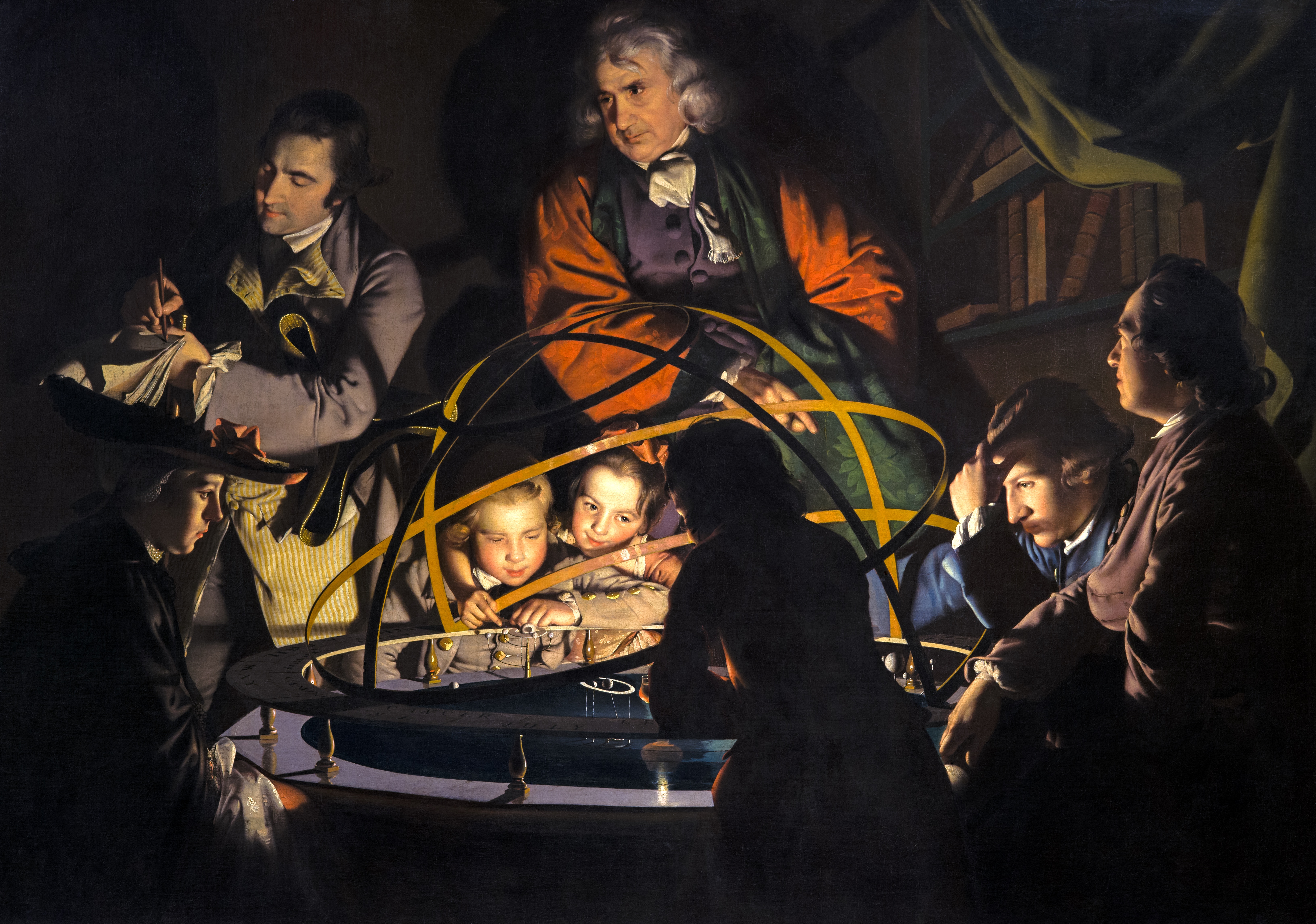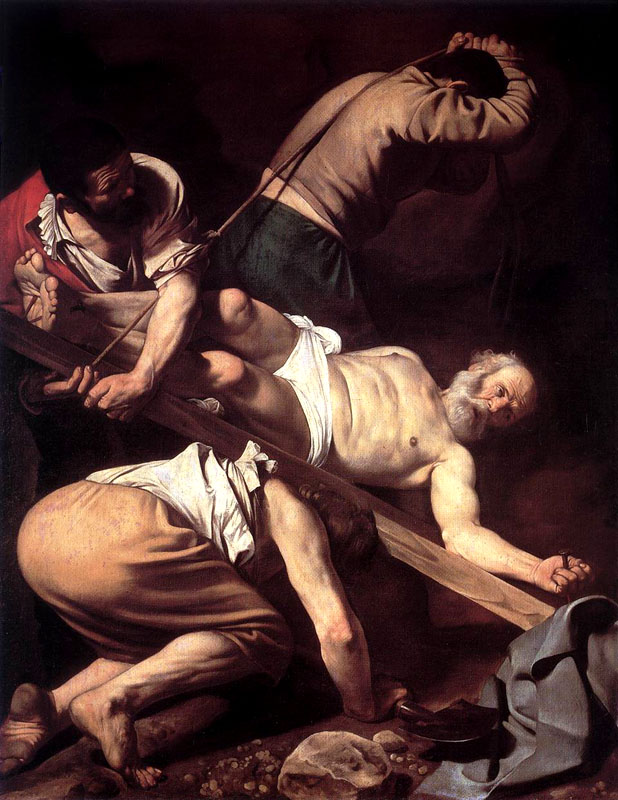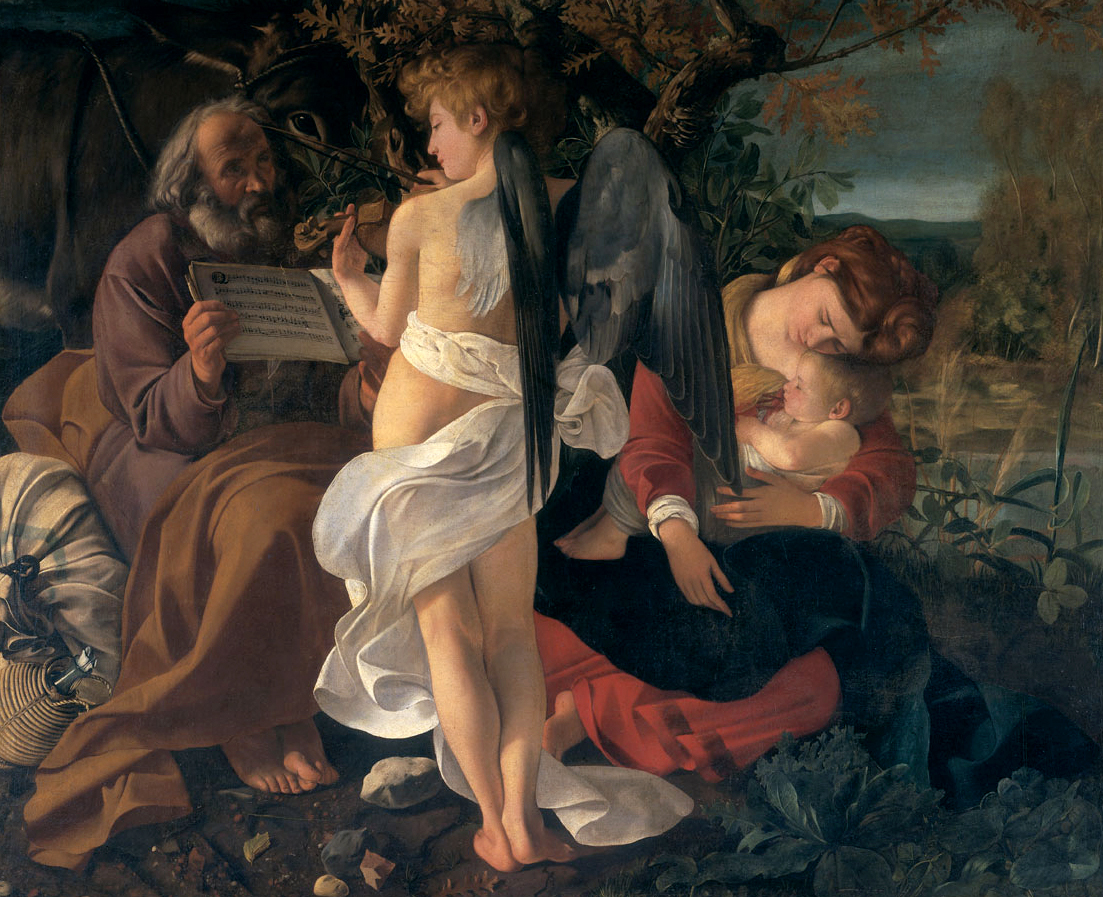Regardless of my inability to see color, I do know what I like, and I just can't get enough of the art of Michelangelo Merisi da Caravaggio. Here is some background information from Wikipedia:
Michelangelo Merisi da Caravaggio (September 28, 1571 – 18 July 1610) was an Italian artist active in Rome, Naples, Malta and Sicily between 1593 and 1610. He is commonly placed in the Baroque school, of which he was the first great representative...Huge new churches and palazzi were being built in Rome in the decades of the late 16th and early 17th centuries, and paintings were needed to fill them. The Counter-Reformation Church searched for authentic religious art with which to counter the threat of Protestantism, and for this task the artificial conventions of Mannerism, which had ruled art for almost a century, no longer seemed adequate. Caravaggio's novelty was a radical naturalism which combined close physical observation with a dramatic, even theatrical, approach to chiaroscuro, the use of light and shadow.
For reference, the first painting below is known as Mannerism, and the second is Naturalism with the use of Chiaroscuro:
Rosso Fiorentino: Moses Defending the Daughters of Jethro
Joseph Wright of Derby: A Philosopher Giving that Lecture on the Orrery, in which a Lamp is put in place of the Sun
What draws me to the art of Caravaggio is the atmosphere that he is able to create, and the story that he tells so richly from just one moment in time. I wanted to use this post to look into his take on biblical subjects, not only to appreciate his ability, but also to see if he really does capture each scene correctly.
Crucifixion of St. Peter
Well, we really don't have a biblical record of Peter being crucified upside-down. However, we do have a reference to his death from Eusebius' Ecclesiastical History which states, "Peter appears to have preached through Pontus, Galatia, Bithynia, Cappadocia, and Asia, to the Jews that were scattered abroad; who also, finally coming to Rome, was crucified with his head downward, having requested of himself to suffer in this way" (Ecclesiastical History 3:1). Regardless, this is an incredible piece of art.
Martha and Mary
The story of Martha and Mary is taken from Luke 10:38-42:
Now as they went on their way, Jesus entered a village. And a woman named Martha welcomed him into her house. And she had a sister called Mary, who sat at the Lord's feet and listened to his teaching. But Martha was distracted with much serving. And she went up to him and said, “Lord, do you not care that my sister has left me to serve alone? Tell her then to help me.” But the Lord answered her, “Martha, Martha, you are anxious and troubled about many things, but one thing is necessary. Mary has chosen the good portion, which will not be taken away from her.”
I don't think that Caravaggio captured this very well at all. In fact, being the ignorant art lover that I am, I didn't see the connection at all. However, I found this explanation on Wikipedia that partially cleared things up:
The painting shows the Biblical sisters Martha and Mary Magdalene - Martha is in the act of converting Mary from her life of pleasure to the life of virtue in Christ. Martha, her face shadowed, leans forward, passionately arguing with Mary, who twirls an orange blossom between her fingers as she holds a mirror, symbolising the vanity she is about to give up. The power of the image lies in Mary's face, caught at the moment when conversion begins.
I'll let you be the judge of this one, but I find it to be a little bit of a departure from the biblical text.
The Sacrifice of Isaac
Here is the biblical reference, Genesis 22:9-13:
When they came to the place of which God had told him, Abraham built the altar there and laid the wood in order and bound Isaac his son and laid him on the altar, on top of the wood. Then Abraham reached out his hand and took the knife to slaughter his son. But the angel of the Lord called to him from heaven and said, “Abraham, Abraham!” And he said, “Here am I.” He said, “Do not lay your hand on the boy or do anything to him, for now I know that you fear God, seeing you have not withheld your son, your only son, from me.” And Abraham lifted up his eyes and looked, and behold, behind him was a ram, caught in a thicket by his horns. And Abraham went and took the ram and offered it up as a burnt offering instead of his son.
I really like this one. I am not going to lie. Everything appears to be there: Abraham, Isaac, the altar, an angel, the ram, the knife. The houses in the background seem a little out of place and a little modern (for the time). The angel also has the typical "youthful" look that is common in most art, yet I doubt heavenly angels really look like that. They are probably a little more intimidating.
Let's look at one more today.
Rest on the Flight into Egypt
So here we have Mary, Joseph, Jesus, and a half naked angel playing the violin. Let's see what Matthew 2:13-15 says:
Now when they had departed, behold, an angel of the Lord appeared to Joseph in a dream and said, “Rise, take the child and his mother, and flee to Egypt, and remain there until I tell you, for Herod is about to search for the child, to destroy him.” And he rose and took the child and his mother by night and departed to Egypt and remained there until the death of Herod. This was to fulfill what the Lord had spoken by the prophet, “Out of Egypt I called my son.”
Right. Good thing Joseph is holding the angel's music or this would be totally inaccurate...At this point you are all wondering why I like Caravaggio so much when he gets so many things wrong. Well, I didn't say I appreciated ALL of his art, and some of the best paintings are yet to come.
Caravaggio's ability with a brush is impressive, but I think we can all see that textual accuracy was not the priority. Things do get better, I promise. Until next time...






No comments:
Post a Comment